The Horizontal Pull Up is a closed circuit calisthenic exercise for the upper-body. The horizontal pull up focuses on developing strength of the back (rhomboids, latissimus dorsi, trapezius), shoulders (deltoids) and bicep musculature. Most tennis players, especially girls, cannot perform regular pull ups because they have weak cores and don’t have enough upper body strength.…
Tag: calisthenics

Push Up to Ipsilateral Arm and Leg Ceiling Raise
The Push Up to Ipsilateral Arm and Leg Ceiling Raise is a calisthenic functional training exercise for professional athletes to improve synergy of the neuromuscular system, core stability, body control and coordination. During the Push Up to Ceiling Raise the focus is on improving neuromuscular system efficiency. The neuromuscular system works in sync when the…

Push Up to Contralateral Limb Raise to Flexion
The Push Up to Contralateral Limb Raise to Flexion is a calisthenic functional training exercise for professional athletes to improve synergy of the neuromuscular system, core stability, body control and coordination. During the Push Up Limb Raise to Flexion the focus is on improving neuromuscular system efficiency. The neuromuscular system works in sync when the…
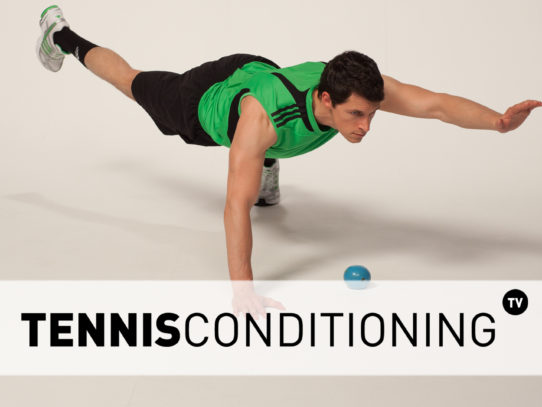
Push Up to Contralateral Limb Raise
The Push Up to Contralateral Limb Raise is a calisthenic functional training exercise for advanced athletes to improve synergy of the neuromuscular system, core stability, body control and coordination. During the Push Up to Limb Raise the focus is on improving neuromuscular system efficiency. The neuromuscular system works in sync when the athlete moves on…

Push Up to Single Limb Raise
The Push Up to Single Limb Raise is a calisthenic functional training exercise for beginners to improve synergy of the neuromuscular system, core stability, body control and coordination. During the Pushup Single Limb Raise the focus is on improving neuromuscular system efficiency. The neuromuscular system works in sync when the athlete moves on the court and…

Single Leg Squat
The Single Leg Squat is a calisthenic exercise for advanced athletes to improve balance, optimize power-production capabilities and enhance flexibility. Learn more about why having great dynamic balance is important and take a look at Tennis Champions: What Separates Them From The Rest? Before you engage in stability training you may want to take a…
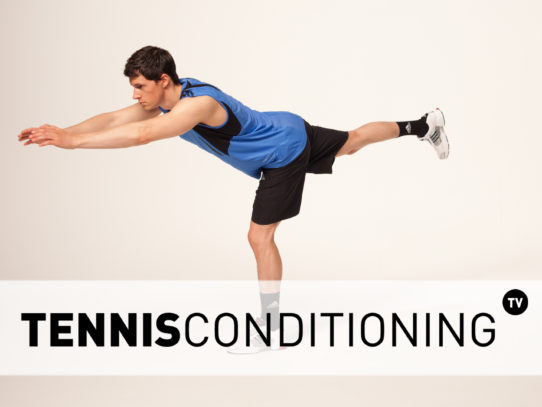
Side-Step to Diagonal Single Leg RDL
The Side-Step to Diagonal Single Leg RDL is a calisthenic stability exercise for tennis players to improve dynamic stability, footwork, optimize power-production capabilities and flexibility. The Side-Step to Diagonal Single Leg RDL is an advanced calisthenic stability exercise. Advanced tennis players can use it to improve skill & balance foundations for more complex movements. Learn…

Side-Step to Diagonal Lunge
The Side-Step to Diagonal Lunge is a calisthenic stability exercise for tennis players to improve dynamic stability, footwork, optimize power-production capabilities and flexibility. The Side-Step to Diagonal Lunge is an entry-level calisthenic stability exercise. Therefore beginners can use it by to improve skill & balance foundations for more complex movements. The Side-Step to Diagonal Lunge integrates…
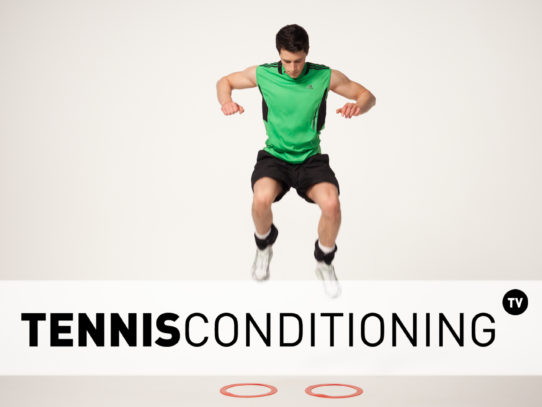
Loaded Mid-Level Tuck Jump
The Loaded Mid-Level Tuck Jump I is a calisthenic ballistic exercise for beginners to improve hip flexor speed, body control, coordination and foot speed-strength. Before you engage in ballistics you may want to take a look at Ballistic Training: How To Optimize Explosiveness for maximum results and a sample ballistic training workout for advanced athletes.…
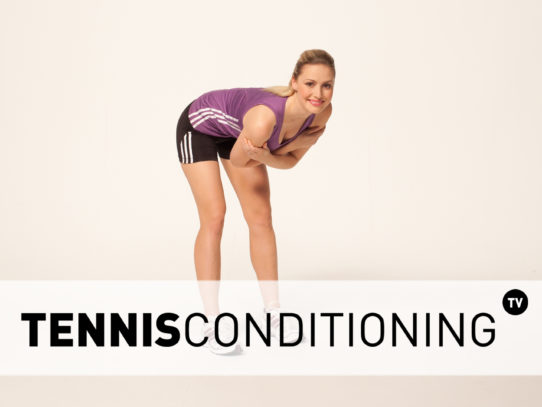
Standing Hip Flexion to Extension
The Standing Hip Flexion to Extension is a calisthenic low back exercise for beginners to improve hip extensor strength, trunk extensor strength, core stabilization, balance and proprioceptive capabilities. During the Standing Hip Flexion to Extension the focus is on strengthening the low back. It is part of the core and hence important for energy transfer…
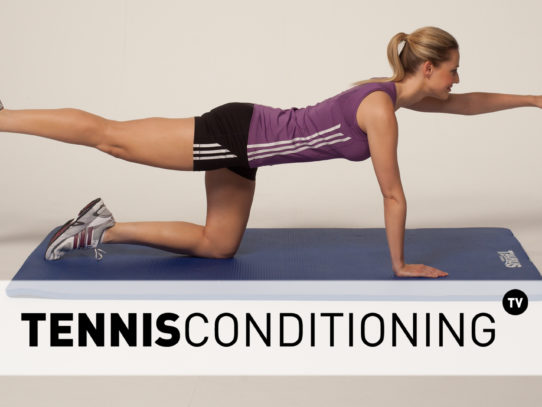
4 Point Prone Contra Lateral Limb Raises
The 4 Point Prone Contra Lateral Limb Raises is a calisthenic low back exercise for beginners to improve hip extensor strength, trunk extensor strength, core stabilization, balance and proprioceptive capabilities. During the 4 Point Prone Contra Lateral Limb Raises the focus is on strengthening the low back. It is part of the core and hence…

Supine Bridging
The Supine Bridging is a calisthenic low back exercise for beginners to improve energy transfer, hip extensor strength, trunk extensor strength and body control for more powerful shots. During the Supine Bridging the focus is on strengthening the low back because it is part of the core. Hence it is important for energy transfer when…

